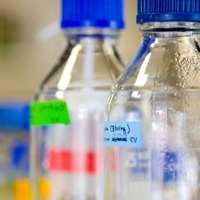Simplifying diagnosis of diabetes in remote indigenous settings

Researchers have found a way of simplifying the diagnosis of diabetes in Indigenous Australians living in remote health care settings, according to a study published in the Medical Journal of Australia.
Early identification of diabetes is crucial to starting preventive treatment that would help close the gap between Indigenous and non-Indigenous health outcomes. However, the current diagnostic test—the assessment of blood glucose levels—is inefficient and time-consuming, particularly for those in remote settings, the researchers wrote.
"Delayed diagnosis is due in part to the use of an algorithm that relies on the assessment of glucose levels and, if the results are equivocal, a follow-up oral glucose tolerance test", the researchers, led by Dr Julia Marley from the University of Western Australia's Rural Clinical School, wrote.
"This complicated algorithm can significantly delay informing and educating the patient.
"In contrast to glucose testing, assessment of glycated haemoglobin A (HbA1c) requires no fasting. This makes it more suitable for opportunistic testing, and results in fewer missed diagnoses."
Marley and colleagues compared the use of standard glucose testing with the application of a combination of point-of-care (POC) and laboratory HbA1c testing in a 255 Indigenous Australians aged 17 years or more without confirmed diabetes across six primary health care sites in the Kimberley region of WA between September 2011 and November 2013.
They found that participants were significantly more likely to receive a definitive test result within 7 days using the HbA1c test, and were more likely to be followed up if an initial result was abnormal.
Further, HbA1c tests detected diabetes in more people than did glucose testing.
"Eight participants subsequently diagnosed with diabetes (four using the HbA1c test, four with additional oral glucose tolerance tests that would not normally have been requested) were incorrectly classified as normal by the glucose algorithm", the researchers wrote.
"No participants with normal HbA1c measurements were subsequently diagnosed with diabetes."
Marley and her colleagues concluded that "the availability of immediate results is likely to further improve diagnosis of diabetes in remote areas and the timeliness of starting treatment".
"Our study shows that adopting the Kimberley HbA1c algorithm may simplify the testing process in previously undiagnosed individuals and provide timelier and more accurate diagnosis of diabetes for Aboriginal people and other high-risk remote populations in Australia and elsewhere in the world."
More information: "Using glycated haemoglobin testing to simplify diabetes screening in remote Aboriginal Australian health care settings." DOI: 10.5694/mja14.01575


















